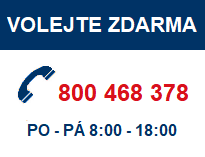Detail analýzy
| 22.12.2022 / Erste Group Research |
CEE Special | CEE events to watch in 2023 Next year, the political agenda is likely to be in focus in Poland, Romania and Slovakia. Poland has a parliamentary election scheduled for November. Law and Justice (PiS) keeps leading in the polls, but its support is melting away, so sustaining a majority remains an open question. A change of government is a likely scenario. In such a case, we would not, however, expect a major change in social policy and/or abrupt fiscal austerity. Nevertheless, we believe that the market would welcome the change with relief, and we would see such a scenario as positive for the zloty as well as for the bond market. In Romania, some short-lived political noise may be expected in May 2023, as, according to government coalition protocol, the Social Democratic Party (PSD) should take over the role of prime minister (most likely to be party head Marcel Ciolacu). Some government portfolios are likely to be swapped between the two main parties. Finally, in Slovakia, the fall of the government, possibility of early elections in 2023 and fiscal struggle (delayed budget proceeding, debate over fiscal rules or high structural deficit) come at a moment when all three rating agencies (S&P, Moody’s and Fitch) see Slovakia’s outlook as negative. The lack of political and fiscal stability is a negative factor when it comes to credibility assessment. Rating agencies are also closely watching the fiscal stance of Czechia and Hungary. The high deficit in Czechia has significantly contributed to the strengthening of inflationary pressures and has become one of the factors behind the worsening of the rating agencies' outlook. In Hungary, the rising problem of a twin deficit may also result in a negative evaluation by rating agencies, especially if the government fails to implement the required reforms safeguarding inflow of EU funds. If it does, however, end earlier than expected, the market outcomes would be favorable, with a strengthening of the Hungarian forint below 400 vs. the euro as a probable scenario, especially if associated with an improving external position. Euro and Schengen area membership are becoming a reality in Croatia just ahead of the country’s 10th birthday of EU membership and an important token of macroeconomic stability going forth. Deepening integration gathered momentum in the recent period. The quest for OECD membership (although still likely a few years ahead) would clearly signal further integration efforts. The integration topic moves into first place in Serbia as well, as the country realizes that the entire region is officially on a path toward the EU, after seeing Bosnia-Herzegovina getting official candidate status. Fearing it might be isolated if it continues its ‘multiple seats’ foreign policy, Serbia is making firmer efforts to find a breakthrough in relationships with Kosovo and doubles down on the reform agenda, allowing for the faster closure of opened EU chapters. |
|
|
Základní informace
| Autor | Erste Group Research |
| Datum | 22.12.2022 |
| Jazyk |  |
| Název produktu | CEE Economies Special Report |
| Hlavní téma | Makro/Úrokové sazby, Směnné kurzy/FX |
| Zaostřeno na ekonomiku | CEE, Česká republika, Chorvatsko, Maďarsko, Polsko, Rumunsko, Slovensko, Slovinsko, Srbsko |
| Zaměřeno na měnu | Česká koruna, Chorvatská kuna, Euro, Maďarský forint, Polský zlotý, Rumunské leu, Srbský dinár |
| Zaměřeno na sektor | - |
| Stáhnout |

